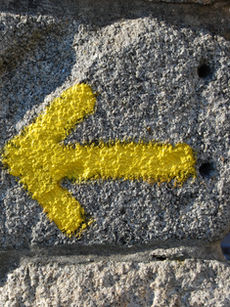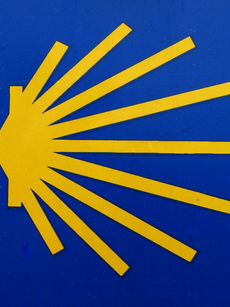
Camino de Santiago
Breve historia

Santiago
Santiago es considerado uno de los doce discípulos de Jesucristo.
Cuenta la leyenda que los restos de Santiago fueron hallados en el noroeste de España en el siglo IX d.C.
Esta devoción a Santiago impulsó el desarrollo de una famosa ruta de peregrinación conocida como el Camino de Santiago. "Camino" se traduce como "camino" en español, y Camino de Santiago se traduce como "El Camino a Santiago de Compostela".
Signos y símbolos
Verás estos signos y símbolos en tu viaje por el Camino. Conocerlos te ayudará en tu viaje. Si quieres saber más, puedes ir a nuestro blog y leer artículos que te lo explicarán con más detalle.



Curiosidades sobre el Camino De Santiago
La Concha
This isn't just a pretty souvenir - it's the symbol of the Camino. Legend says it guided pilgrims to St. James' tomb, and now bright yellow scallop shells mark the routes.
Free wine fountain
Yep, you read that right. On the Camino Frances route, the town of Ayegui offers weary pilgrims a refreshing (and free!) glass of vino from a public fountain.
Many caminos, one destination
The Camino de Santiago isn't just one path. There are over a dozen routes across Europe, all leading to Santiago de Compostela in Spain.
Holy year bonanza
Every year when St. James' Day (July 25th) falls on a Sunday, it's a special "Holy Year" in Santiago. Expect bigger celebrations and more pilgrims on the trail.
The Camino goes medieval
The Codex Calixtinus, a 12th-century guidebook, is the OG Camino resource. It has maps, itineraries, and even local legends to keep pilgrims informed and entertained.
More than walking
While walking is traditional, you can also cycle (bicigrinos!), horseback ride, or even hike the Camino. Choose your adventure!
Not just religious
The Camino is open to all. While many walk for religious reasons, it's a popular journey for self-discovery, cultural immersion, and enjoying the beautiful Spanish countryside.
Snack time on the Camino
Forget fancy restaurants, some of the best Camino treats are simple and delicious. Think fresh bread from local bakeries, sweet "tetilla" cheese, and energizing "pulpo a la feria" (octopus dish).













